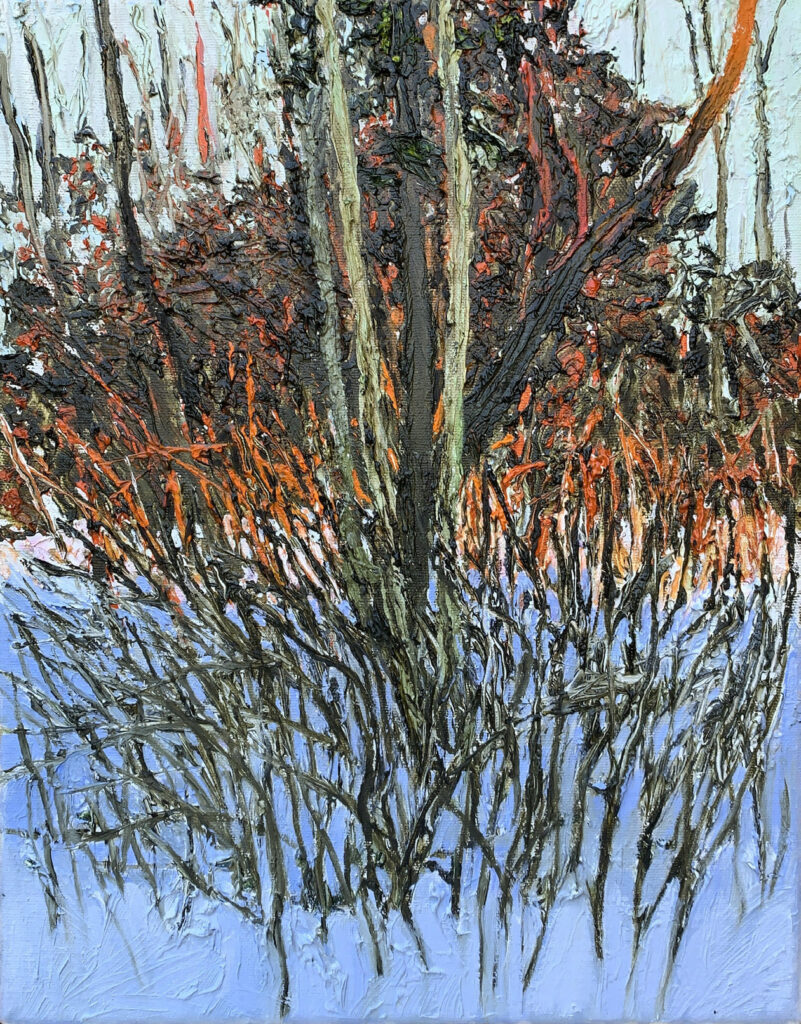
oil on canvas, 14 x 11 inches
Margaret Grimes (1943-2020), painted as if blessed by the mystic coppice of Cernunnos, the powerful archaic Celtic deity, widely worshipped as the “lord of wild things.” Creating plein air woodland canvases, as a pictorial alchemist, she spent years carefully observing trees and branches, their lights and darks born from nature’s fractals, documenting arbors in detailed visual concerti. Her subject, often a singular tree complemented by a forest, was impressionistically colored by both her mind’s eye and brush, to integrate detailed iterations of landscape near her home of which she had an intimate understanding.
The artist communicated these insights throughout her life as a mentor of artists and painters. There was a recent exhibition entitled The Marsh King’s Daughter mounted in memoriam last February at Blue Mountain Gallery. In the past, Grimes had indicated that the examination of darkness was important to her as she created her monumental works. Here, her title for the Blue Mountain series, I Feel, helps us understand the inscrutability of the results of her palette; the tangled brush and dark evergreens were perhaps emotional windows to secrets kept and personal fairytales as tropes.
The foliage depicted reminds me of Michigan’s Upper Peninsula forests, where one may walk for hours on dirt roads, protected by fragrant conifers as lone companions, majestic deer, startling me from the thicket, interrupt the sublime rhythmic reveries of the hike. The forest’s spirit emanates throughout Grimes’s pieces in scumbled and glazed paints, evoked by tangled underbrush and deep green leaf-laden horizontal branches giving juxtaposition to the immense tree trunk verticals. This type of compositional choice brings formidable dramatic tension to the canvases, simultaneously arousing unease in the viewer as the realistic landscape cannot be clearly discerned, conjuring foreboding from nature, beguilingly rendered.
A question may be asked, “does the artist, through her treatment of darkness, manifest the welling-up of feelings in the paintings, based upon her own visceral experiences?” Grimes begs us to ask what the leaves and brambles hide so well. Although she repeatedly observed the woods near her home to create her paintings, the details are cloaked in mystery, the responses to our queries are not overwhelmingly esoteric, but still bring to my mind Lord Byron, in the pleasure of the pathless woods where society does not intrude. Grimes’ documentations of nature stay with me through the divine intervention of her heart, the inklings of immanency, even long after the physical presence has departed. Her depictions of truth and beauty last through the artist’s thoughts and works, always guiding us as a great teacher and creator, handing over to us tools not to love humankind less, but to love nature more. G&S





Leave a Comment